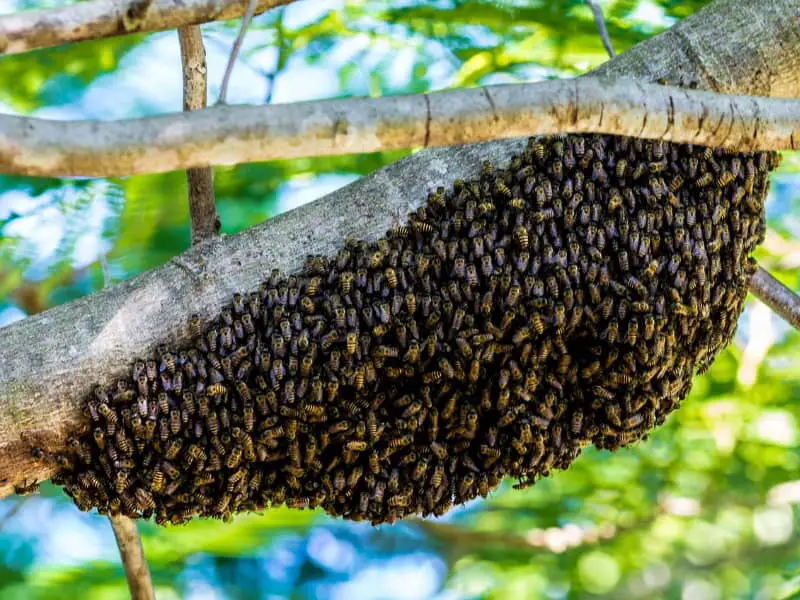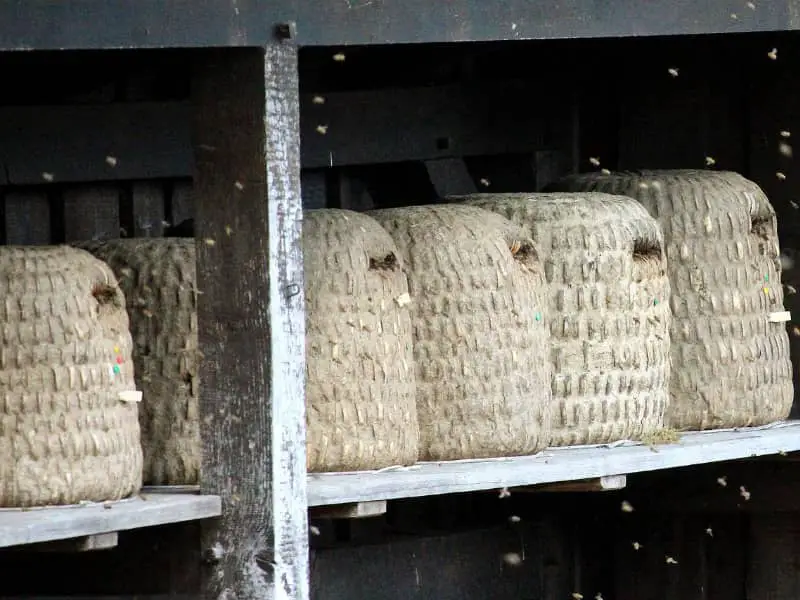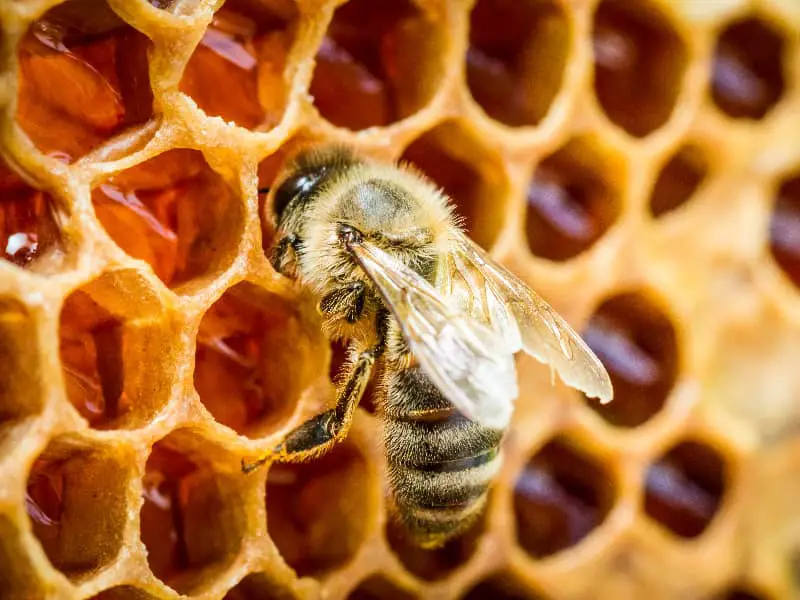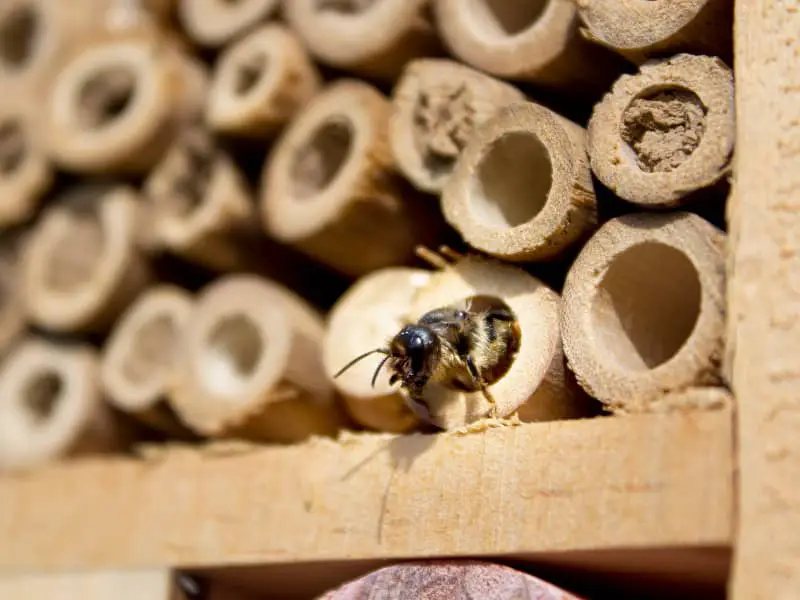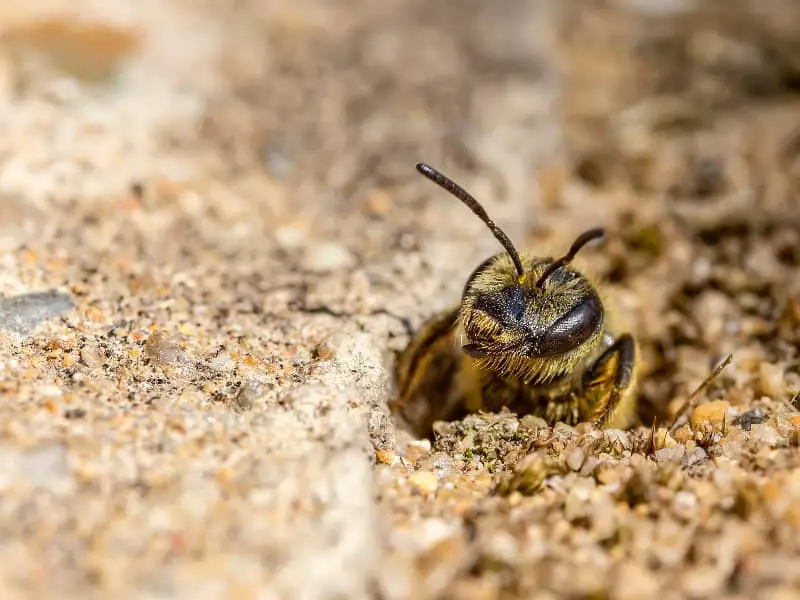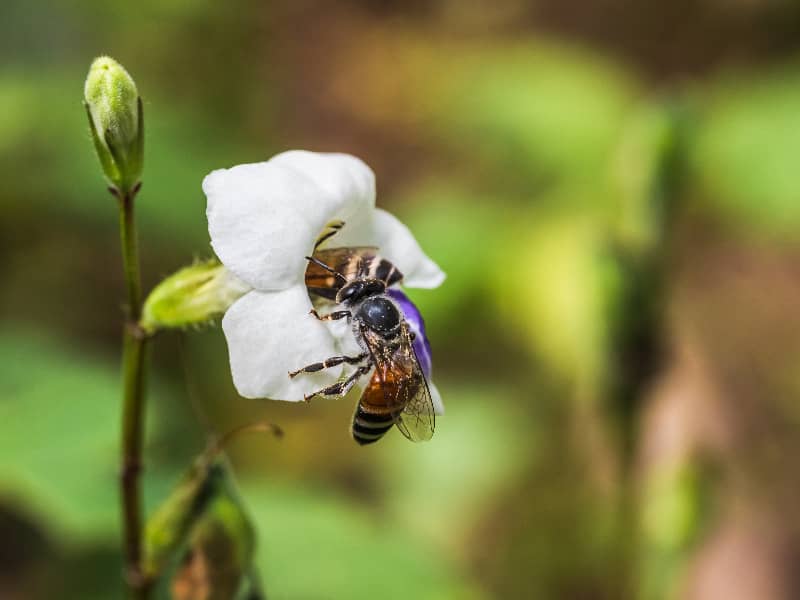
How long do bees fly in the evening?
If you've ever been outside on a balmy summer evening and heard the buzz of a bee, you may have wondered, how long do bees actually fly in the evening? In this blog post, we'll get to the bottom of this question and explore the fascinating world of bees and their behavior during the evening hours.
- How long do bees fly in the evening?
- Importance of the topic: How long do bees fly in the evening?
- Daily rhythm of the bees
- Evening activity
- How long do bees fly in the evening? - Environmental factors
- How long do bees fly in the evening? - Foraging in the evening
- How long do bees fly in the evening? - Orientation in the dark
- Practical applications to take advantage of the evening flying
- Conclusion: How long do bees fly in the evening?
Importance of the topic: How long do bees fly in the evening?
Bees play a crucial role in our ecology and agriculture. They are not only responsible for pollinating plants, but also produce honey and wax. Therefore, it is important to understand their behavior and daily rhythm in order to optimize both their protection and our interaction with them.
Aim of the blogpost
The main goal of this paper is to shed light on the evening behavior of bees. We will look at various factors that influence bee activity, from biological aspects to environmental factors. By the end, you should have a comprehensive understanding of how and why bees fly in the evening and the impact this has on their lifestyle.
Interesting facts about bees
Before we delve deeper into the specific topic of evening flying, it is helpful to know some basics about bees. These fascinating insects have complex social behavior, a division of labor within the colony, and even the ability to communicate with each other through special "dance" movements. They are irreplaceable for pollinating a wide variety of plants and thus have a key role in our ecosystem.
Daily rhythm of the bees
While most of us associate the daily rhythm of bees with sunrise and sunset, there are several factors that influence the daily life of these industrious insects. In this section you will learn more about the activity phases of bees, their behavior at night and how temperature shapes their activities.
Activity Phases
Bees are predominantly diurnal insects. Early morning is often the time when they leave their hives to forage for food and perform their pollination duties. Activity usually peaks in the late morning or early afternoon. However, depending on various factors such as weather and food availability, bees may also be active in the evening hours. It is worth noting that the phases of activity can vary depending on the bee species and geographical location.
Night behavior
Although bees are not usually nocturnal, there are exceptions. Some species have adapted to darkness and can forage at night. However, this is the exception rather than the rule. At night, most bees return to the hive where they rest and gather their energy for the next day. Within the hive, important social interactions and grooming behaviors also take place during this time.
Temperature dependence
Temperature plays a crucial role in the daily rhythm of bees. Low temperatures can severely limit the bees' ability to fly and their activity. Therefore, in temperate climates, they are less active or even in a kind of hibernation during the colder months. In warmer months, especially in summer, the bees' activity can continue into the evening hours, especially when temperatures are favorable.
Evening activity
Bees are known for their tireless work, but what about their activity when the sun goes down? In this section we focus on the period of evening activity, the reasons for such flights and the possible impact on the entire colony of bees.
Time period of the evening activity
The period of evening activity in bees can vary depending on the species and environmental conditions. As a rule, bees are active until sunset, but some species also fly at dusk. In midsummer, when days are longer and temperatures are milder, this period can be extended even further. It is important to emphasize that evening activity is strongly influenced by light conditions and temperature.
Motivation for evening flights
The main motivation for evening flights is often to find food. Some flowers open only at dusk, providing an additional food source. However, there may be other reasons, such as the need to protect the hive from nocturnal dangers or to gather special building materials. It is also conceivable that evening quiet means less competition from other pollinating insects, which could increase foraging efficiency.
Effects on the colony
Evening activities can have both positive and negative effects on the bee colony. On the one hand, such flights can open up additional food sources and thus contribute to strengthening the colony. On the other hand, flights at dusk or in darkness also carry risks, such as increased risk of predatory insects or poorer orientation. The absence of workers in the hive during the night may also affect social interactions and the general welfare of the colony.
How long do bees fly in the evening? - Environmental factors
Bees are exposed not only to biological but also to various environmental factors that can influence their activity. Especially in the evening, such conditions can have a significant impact on bee behavior. In this section, we look at how weather, geographic features, and light conditions affect the evening flight activities of bees.
Weather dependency
Weather plays a crucial role in the activity of bees, not only during the day, but also in the evening. While sunny and warm days encourage bees to be more active, rain, wind and lower temperatures can discourage insects from leaving their hives. Especially in the evening hours, when temperatures generally drop, the weather can significantly affect the bees' willingness to fly.
Geographical features
The geographic location of a hive can also have a major impact on the evening activity of bees. In regions with longer daylight hours, such as in the far north during the summer, bees may tend to be active longer. In mountainous areas or forests, topography can make access to food sources more difficult and thus alter the period of activity.
Lighting conditions
Light is another important factor affecting the evening activity of bees. Bees generally rely on natural light for orientation. At dusk or in low light, their ability to find food and return to the hive can be significantly reduced. However, some bee species have adapted to lower light conditions and can be active at dusk or in moonlight.
I hope this section has given you a comprehensive overview of the various environmental factors that affect the evening activity of bees.
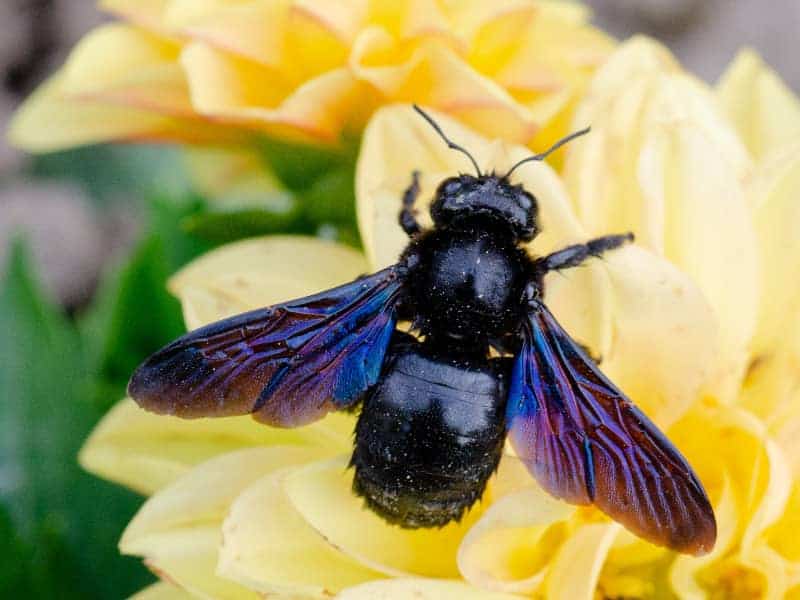
How long do bees fly in the evening? - Foraging in the evening
Foraging is one of the main activities of bees and can extend to the evening hours. But what kind of food do bees forage for in the evening, how efficient is this foraging, and how does it differ from daytime activity? These are the questions we want to answer in this section.
Types of food
In the evening, bees mainly forage for nectar and pollen, similar to the daytime. Some plants open their flowers specifically at dusk, providing an exclusive food source. In addition, bees may also forage for water and certain minerals that are important to the colony. However, it is important to emphasize that the range of available food sources tends to be smaller in the evening than during the day.
Foraging efficiency
The efficiency of foraging in the evening can be influenced by several factors. On the one hand, reduced competition from other pollinating insects may make foraging more successful. On the other hand, poorer light conditions and lower temperatures may reduce orientation and thus foraging efficiency. The risk of falling prey to predators may also be higher, making foraging more challenging.
Comparison with day activity
Compared to daytime activity, evening food sources are often more limited and specific. During the day, bees have access to a wide range of flowering plants rich in nectar and pollen. In the evening, however, options are more limited, both in terms of plant species and the amount of nectar and pollen available. In addition, lower visibility and temperature can reduce foraging efficiency.
How long do bees fly in the evening? - Orientation in the dark
The ability to find their way in the dark is a particular challenge for bees, but also a fascinating example of sensory and evolutionary adaptations. In this section, we look at the sensory abilities of bees, the difficulties and challenges they face in the dark, and the evolutionary adaptations that allow them to navigate even in such conditions.
Sensory abilities
Bees have various sensory abilities that help them orient themselves. They mainly use their eyes and antennae to gather information about their surroundings. Some bee species can also detect polarized light, which helps them to orient themselves better. At dusk or in low light conditions, the role of antennae becomes even more important as they act as a sense of touch and smell.
Difficulties and challenges
Orientation in the dark presents numerous challenges. First, light conditions are poor, which impairs visual perception. Second, temperatures are often lower, which limits the bees' ability to fly. In addition, darkness increases the risk of bees getting lost or trapped by natural enemies.
Evolutionary adaptations
Over the course of evolution, some bee species have adapted to the challenges of darkness. For example, some species have developed larger or more sensitive eyes that can catch more light. Others have more complex antenna structures that allow them to better perceive scents, making it easier to find food sources or the way home to the hive.
Because of these adaptations and their amazing sensory abilities, bees are able to find their way in the more difficult conditions of darkness. I hope this section has given you more insight into the fascinating world of bees and their ability to find their way in the dark.
Practical applications to take advantage of the evening flying
The behavior of bees in the evening hours has not only biological interest but also practical applications. Beekeepers, farmers, and conservationists can benefit from a better understanding of bees' evening activities. In this section, we address the importance to beekeepers, the role of pollination in agriculture, and the need for conservation action.
Importance for beekeepers
It is important for beekeepers to understand the daily rhythm of their hives to ensure the best care and harvest. Knowledge of evening activity, for example, can help in deciding when is the best time to harvest honey or introduce a new queen. It can also give beekeepers guidance on how to protect their hives from nocturnal predators or bad weather conditions.
Pollination in agriculture
Some agricultural crops depend on pollination by bees, and knowledge of their evening activities can be useful here as well. If certain crops prefer to flower in the evening, knowledge of bees' evening behaviors could help optimize pollination strategies. This can increase yields and thus improve the profitability of agriculture.
Nature conservation measures
Understanding the evening activities of bees can also play a role in developing conservation measures. If it is known what factors influence the evening activity of bees, targeted measures can be taken to protect their natural habitats. This could include, for example, selecting specific plant species for planting in protected areas or establishing special nesting sites.
Conclusion: How long do bees fly in the evening?
The topic "How long do bees fly in the evening" is not only biologically fascinating, but also has practical implications in various fields. A deeper understanding of this behavior can not only give us insights into the biology and ecology of these important pollinators, but also influence practical applications in beekeeping, agriculture and conservation. Below, we summarize the most important findings and their significance.
Biological perspectives
As we have seen, the activities of bees in the evening hours are influenced by various factors such as temperature, light conditions and food availability. Bees have adapted to the challenges of darkness through various sensory abilities and evolutionary adaptations, highlighting their remarkable versatility.
Practical meaning
For beekeepers and farmers, understanding the evening activities of bees can play a role in optimizing their practices. This can translate into better honey harvests, more efficient pollination, and ultimately increased yields. This knowledge is also valuable to conservationists in developing targeted measures to protect bees and their natural habitats.
Author

-
Garden animal - A life with nature
Welcome to my animal blog! My name is Dirk and I am happy to take you on my journey through the fascinating world of animals and gardening.
Born 54 years ago, I have had an insatiable curiosity for the animal world around me since childhood. Although I have moved professionally in other industries, my true passion has always been animals and nature. It is remarkable how a small garden has become such an important part of my life.
Many of my fondest memories are associated with the animals that share our home. Whether it's the curious squirrels that scurry across the trees in the morning, the colorful variety of birds that visit our feeders, or the busy bees and butterflies that pollinate our flowers, every moment with them is invaluable to me.
This blog is my contribution to share my experiences, discoveries and insights with like-minded people. Here I will share stories of unforgettable encounters with animals, give tips on gardening and creating wildlife-friendly habitats, and take you on my journeys through nature.
Thank you so much for being here!
Cordial,
Dirk aka garden animal
Last posts
- 27. February 2024PetsVeganes Hundefutter – Grün und Gesund?
- 18. January 2024ChickensOregano für Hühner
- November 27, 2023HamsterDiurnal hamsters
- November 24, 2023HamsterHamster hammock

